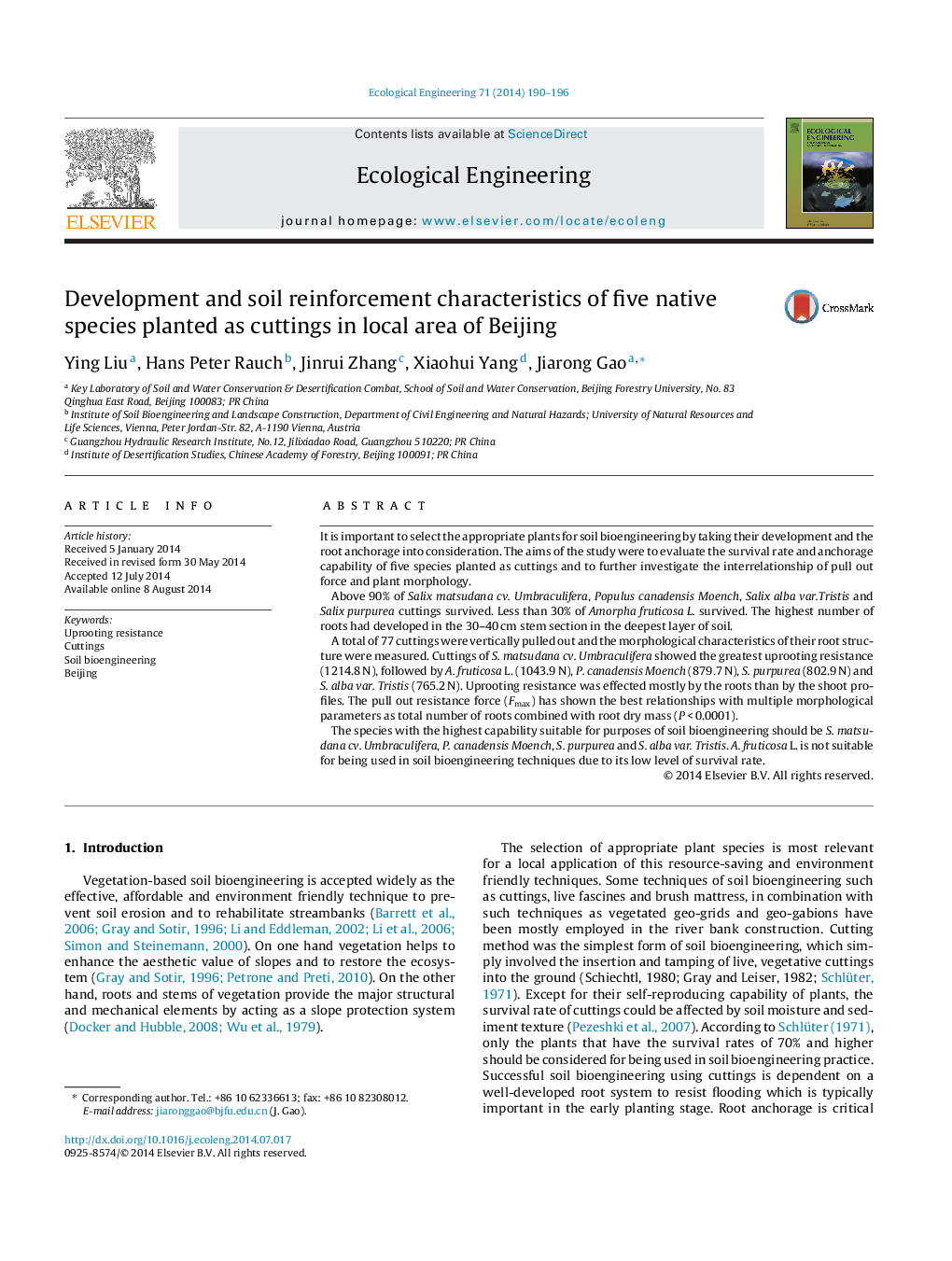| Article ID | Journal | Published Year | Pages | File Type |
|---|---|---|---|---|
| 4389154 | Ecological Engineering | 2014 | 7 Pages |
It is important to select the appropriate plants for soil bioengineering by taking their development and the root anchorage into consideration. The aims of the study were to evaluate the survival rate and anchorage capability of five species planted as cuttings and to further investigate the interrelationship of pull out force and plant morphology.Above 90% of Salix matsudana cv. Umbraculifera, Populus canadensis Moench, Salix alba var.Tristis and Salix purpurea cuttings survived. Less than 30% of Amorpha fruticosa L. survived. The highest number of roots had developed in the 30–40 cm stem section in the deepest layer of soil.A total of 77 cuttings were vertically pulled out and the morphological characteristics of their root structure were measured. Cuttings of S. matsudana cv. Umbraculifera showed the greatest uprooting resistance (1214.8 N), followed by A. fruticosa L. (1043.9 N), P. canadensis Moench (879.7 N), S. purpurea (802.9 N) and S. alba var. Tristis (765.2 N). Uprooting resistance was effected mostly by the roots than by the shoot profiles. The pull out resistance force (Fmax) has shown the best relationships with multiple morphological parameters as total number of roots combined with root dry mass (P < 0.0001).The species with the highest capability suitable for purposes of soil bioengineering should be S. matsudana cv. Umbraculifera, P. canadensis Moench, S. purpurea and S. alba var. Tristis. A. fruticosa L. is not suitable for being used in soil bioengineering techniques due to its low level of survival rate.
